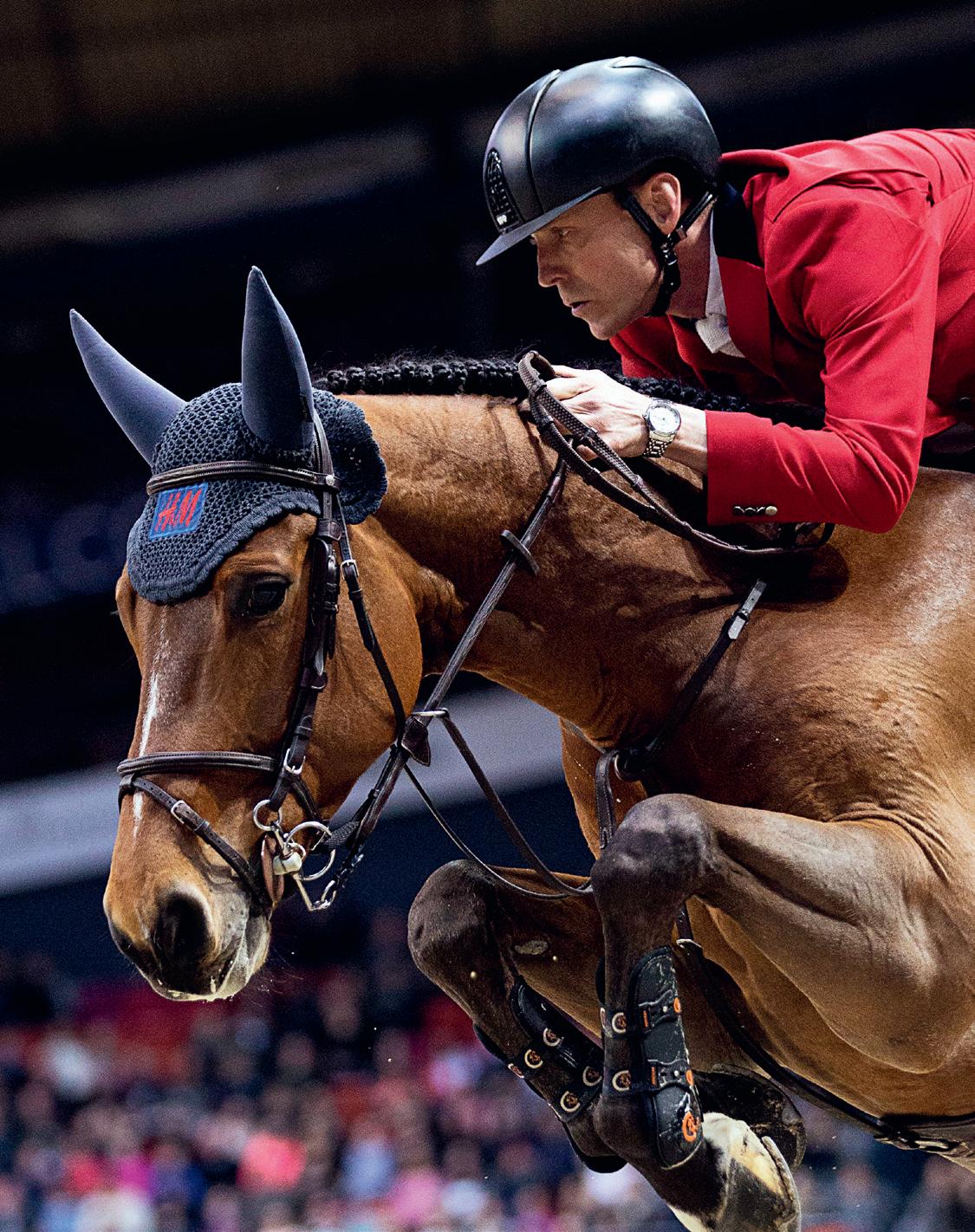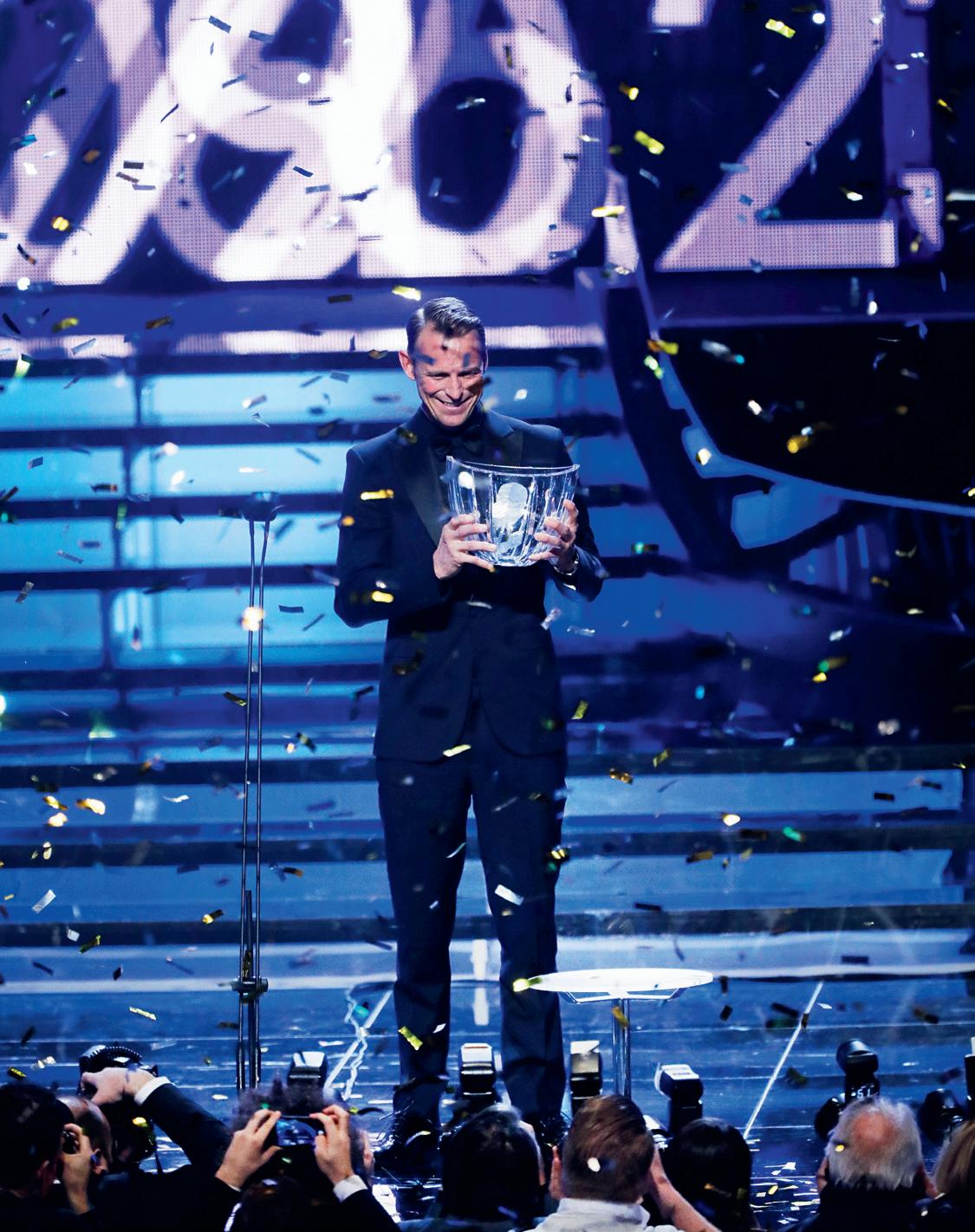
5 minute read
BOUND FOR THE OLYMPICS WITH H&M AND MAGIC BENGTSSON
from 9789171265852
by Provläs.se
There was something special when I jumped with H&M Magic Bengtsson. I could jump as high as I wanted without it feeling difficult, but at the same time he felt a little like chewing gum.
H&M probably wanted things exactly as they were – that they’d help a young rider to succeed. And they must have seen that I had some talent, perhaps more than I recognised myself. Otherwise, they probably wouldn’t have dared to invest as much as they did. The sponsorship deal proved to be a real turning point for me. You may ask why I hadn’t really gone for it before, but you need a reason and a little pressure from inside or elsewhere to find the energy you need to make the necessary changes to improve. To set goals and put together a plan for how to get there. It’s not always about how hard you work, but about having the right priorities – planning your time and managing your daily life. Every small decision you make every day must take you in the right direction.
Advertisement
With our farm Grevlunda under construction, it had not yet been possible, and there had been far too little time, to sit down and consider how I could improve my own career. Besides, there were so many other fun things that needed to be done. The H&M sponsorship deal changed all that. I was motivated and had a reason to focus on myself, I wanted H&M to be happy with its choice of rider.
You should see pressure as something positive. Like a fuel, you need to propel yourself to the next level.
A lot of things fell into place in 2003. Magic Bengtsson came to my stables by chance and shortly afterwards I signed a sponsorship deal with clothing company H&M, I felt fully motivated, Johan Fyrberg joined my management team, Henk Nooren was national team coach and Sylve Söderstrand team captain; overall, this gave me a head start to my jumping career.

Our long-term goal is the Rio Olympics; All In is extremely careful so I have trained him very gradually. He starts his first international Grand Prix at the Gothenburg Horse Show at the age of nine.
the World Championship in Normandy. It was wonderful to be a father again. I thought he should be named Fritiof Fredricson after Fritiof Nilsson ‘Piraten’ in Kivik, but Lisen liked the name Bill, so we went with Bill Ingvar Fredricson.
Sibon made a fantastic start to the World Championship. After the speed class, we were in 10th place. The track for the first team round the next day was huge. We came in wrong to a line and Sibon landed awkwardly. On a small, careful horse like Sibon, this is the last thing you wanted. He tensed up and lost his rhythm and we had two more fences down. Twelve faults in total; not good.
I was a little worried about how Sibon had taken our bad round because we had an equally big course to jump the next day; but being the fighter he is, he went in and did a clear round incurring only one time penalty.
At the time, Sibon was my only Grand Prix horse and even though he did two of three rounds well at the World Championship, in retrospect I wish I had had more good horses in our stables at the time. Then I could’ve taken a horse with more scoop to the World Championship and entered Sibon in classes that were more comfortable for him. This would probably have meant he would have had a longer career and won significantly more classes.
To give every horse as good a career as possible and stay at the top level as a rider, you have to have a stable with several good horses.
All In was being developed for the long-term and I continued the work of building up his body and the trust between us. He went to competitions as a third horse and mostly competed in lower classes. All In is always extremely ambitious in the arena, he so obviously knows what he has to do. He has a special talent for jumping, and a technique and power that allows him to jump a big fence effortlessly. He is careful and always wants to jump clear. It’s as if he has tiny cameras in his hooves, he knows exactly where the poles are. And he knows when he does something good, and this is perhaps his best quality as a competition horse because he wants to do it again and again.
In 2015, All In had his Grand Prix debut at Borås and we won. He was nine years old, and the Scandinavium Grand Prix was approaching. It was time I let him face the audience and TV cameras in the international five-star Grand Prix class.
The Scandinavium indoor arena in Gothenburg is packed. All In has never seen such a large audience before. There’s something special about competing at home, especially in Scandinavium. Swedish spectators are

Receiving the Jerring Award was fantastic and one of the awards you neither expect nor can do anything about – others do the work for you. It was so enjoyable and humbling to receive an award that the people voted for. There was some criticism afterwards, but that goes with the territory.
A fresh, exciting talent had arrived in the stables at Grevlunda: H&M Christian K, whom Charlotte wanted to invest in. He had previously been ridden by Daniel Svensson and I’d seen him at several national competitions and liked the look of him. He looked quite strong, seemed to be very careful and had a good canter. At elite level, a rider needs a number of really good horses, and I had a feeling that Christian K could be just such a horse.
At Radio Sweden’s sports gala event, Idrottsgalan, in January 2017, I was voted winner of the Jerring Award. I was delighted and exceptionally honoured to receive such an award. Not just for myself but for the entire Grevlunda team. A lot of people contributed to my success. In my opinion, the award was also for equestrian sport. Rider Rolf-Göran Bengtsson winning the Jerring Award a few years earlier provoked a lot of criticism, and the same thing happened again: ‘Riding is not a sport’, ‘The horsey crowd have got together to stage a coup’, ‘golfer Henrik Stenson should have won’, ‘The horse should have got the prize’, and all the rest of it. It’s probably lucky that I don’t really care about what others think, otherwise it would probably have been tough, but on balance I was happy that so many people got involved and phoned in to vote – multiple times in some cases.
It was time to celebrate again, which meant a lot was going on, and little sleep. It was important to make the most of it – you may only get the Jerring Award once in your career, I thought.
Someone asked me how I could influence how people thought about horses or how I could get others more interested in the sport. ‘Well, it’s about being visible, isn’t it?’ I replied.
I have no desire whatsoever to be famous, but I have shared my views on horses and the sport in several documentaries, including in Swedish Television’s Ryttareliten’ (‘The Equestrian Elite’) and All In, den bevingade hästen (‘All In, the Winged Horse’). This is a good way to get more people interested in equestrian sports and perhaps encourage positive change. Debate around my Jerring Award has led more people to actually begin to realise how great equestrian sports are. I hope so anyway, and I hope that I will leave a legacy when my career is over. That I did more than just my thing with a medal hanging on the wall. Hopefully, I’ve also managed to inspire other young riders and get more people interested in interacting with horses. There’s a lot of joy in this sport: companionship with others and a fascinating depth, in that you participate in a sport together with another living creature – the horse. In addition,




